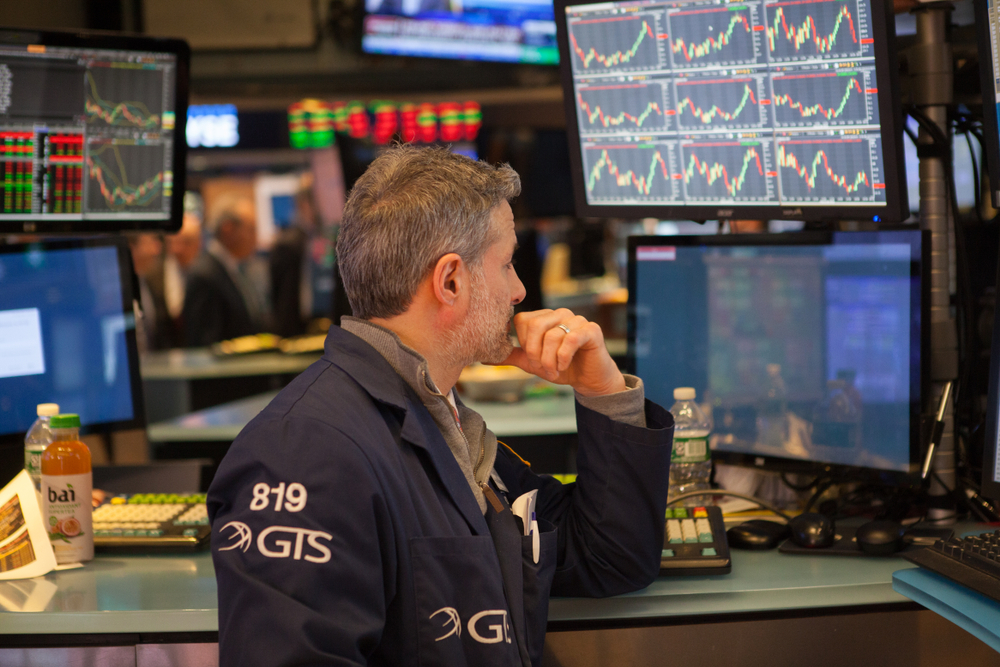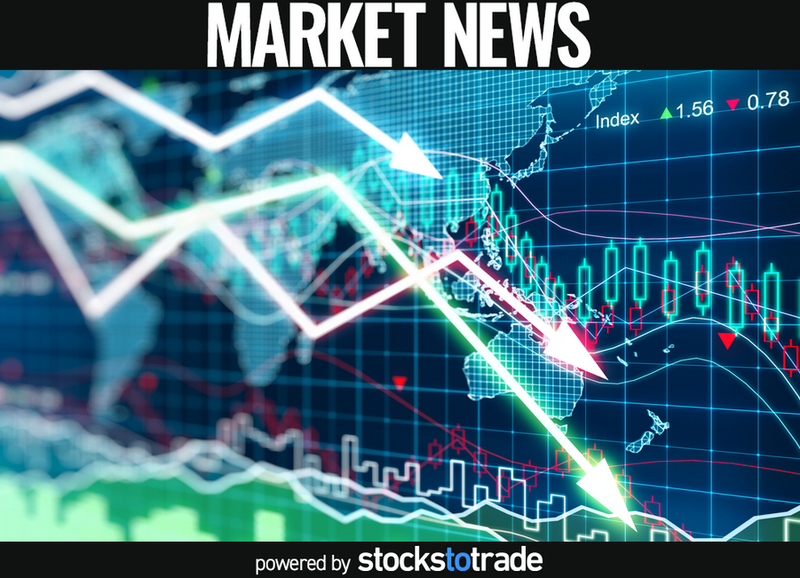Is the Market About to Crash?
“It’s the burst of euphoria that typically brings these things to an end, and we are seeing this all around us today.” – Jeremy Grantham
“People say I didn’t warn last time. I did, but no one listened. So I warn this time. And still, no one listens.” – Dr. Michael Burry
Table of Contents
Whenever major indexes near all-time highs, anxiety builds about an impending correction, and a barbershop quartet of bearish voices come through the airwaves.
But while these calls to market action are usually spurious outliers, beckoning the adage “even a broken clock is right twice a day,” the negative sentiment today appears more pervasive.
Ray Dalio, Jeremy Grantham, Dr. Michael Burry, Jeffrey Gundlach, Tony Dwyer, Rick Rieder, and Scott Minerd are just a handful of the legendary traders who have recently warned of the existence of a market bubble and the high probability of an impending correction.
Conversely, macroeconomic data continues to beat expectations as the country reopens and vaccine administration soldiers on, pointing to signs of a possible economic boomtown for the remainder of fiscal 2020.
So with all of this conflicting data coming down the pipe, where does the market definitively stand?
Should traders be prepared for an epic crash, or double-down on the “Roaring 2020s?”
Before considering anything else, traders need to examine the portfolio composition of the major indices. Because it is the most widely-referenced benchmark, today we will focus on the S&P 500.
Over the past two decades, technology has taken hold of the entire world economy. Automation and algorithms have proven themselves to be unstoppable profit-generating mechanisms, and every successful business is now, in some way, shape, or form, a technology company.
If a corporation fails to realize this, and does not make a rapid shift towards technological innovation, they inevitably lag behind their peers and eventually fall victim to economic Darwinism.
Due to this reality, many of the legacy corporations that make up the S&P 500 desperately rely on a small selection of mega-cap tech companies to supply them with software as a service. You need to look no further than Amazon Web Services.
The rapid ascension of these big-tech behemoths has led to an asymmetric weighting in the index, and six companies now make up 22 percent of the S&P 500.
This has birthed a historically unprecedented scenario, a veritable “house of cards” in the portfolio, wherein a single piece of seriously negative news for any one of these businesses could substantially affect the value of the entire index.
The fragility of the indices appears more critical than ever when we examine some key data metrics.

Editorial credit: orhan akkurt / Shutterstock.com
Historically, there have been few better barometers of index overvaluation than that of the legend himself, Warren Buffett.
“The Buffett Indicator,” as it’s known today, measures the ratio of total stock market value to GDP. Since 1990, it has been a stunningly accurate prediction tool when evaluating the possibility of an imminent market pullback.
And the indicator has never been as inflated as it is today.
In 2000, at the cathartic zenith of the dot-com bubble, the indicator had a reading of 67 percent and projected that stocks were 60 percent overvalued…
Today, it reads a whopping 234 percent, projecting that U.S. stocks are 88 percent overvalued.
Current market trends show us that fundamental overvaluation means little if investor sentiment is continually rising, which in the era of Robinhood and WallStreetBets, seems to always be occurring. However, a closer examination reveals some cracks appearing in the unwavering retail bullishness.
A recent E-Trade survey found that 69 percent of its clientele believes we are already in a market bubble. This is a staggeringly high number for the generally bullish retail segment to come in with. Furthermore, a recent tepid reaction to big tech earnings could spell similar troubles for trader sentiment.
Apple and Amazon, the first and fourth-most valuable companies in the world, respectively, reported Q1 2021 earnings this week. While both prints smashed analyst expectations, the share prices barely budged.
This indicates that regardless of incredible earnings, there is a general lack of appetite for adding big tech shares at these levels, much yet for starting a new position.
Meanwhile, a perplexing contradiction arises when looking at stocks like Seaworld. This is just one example among many, currently trading nearly 50 percent higher than its pre-COVID peak, while revenues are nowhere near where they were pre-pandemic.
Another foreboding harbinger is the possibility of some level of hyperinflation, which many classical economists have indicated is more probable than possible. Any significant amount of inflation would be disastrous for risk asset prices as it creates a tax on capital, discouraging companies from investing by reducing their real returns.
Reading all of this, you may be thinking it’s time to liquidate your entire portfolio and open a bar in Aruba … but don’t book your ticket just yet.
As the chorus of bears hits new high notes, much of the macroeconomic data is beginning to suggest otherwise. Meanwhile, a growing number of market pundits have also taken the contrarian view, predicting a face-ripping bull rally through the summer.
If you look at the last 12 months as a hyper-contracted recession, where an exogenous event depressed the economy (and thus asset prices), history tells us we could be nearing a period of expanded economic euphoria, not unlike the 1920s.
Assuming that data related to COVID-19 vaccinations remains positive, pent-up demand for real-life experience could help to blow the lid off the economy this summer. The entire world could feel like Ibiza or Tel Aviv, rejoicing with their pocketbooks in the prospect of a pandemic-less future.
There’s an argument to be made that the stage is set for this, and so far the hard data coming from the Fed seems to indicate as much. Personal income rose 21 percent in March, while Q1 as a whole saw a 6.4% quarter-over-quarter increase in GDP. And perhaps most importantly, unemployment claims remain at a twelve-month low.
John Williams, the president of the Federal Reserve Bank of New York, predicted this explosive growth back in February, saying “with strong federal fiscal support and continued progress on vaccination, GDP growth this year could be the strongest we’ve seen in decades…such a robust rebound would be very welcome after the toughest period for the economy in living memory.”
 Most of the “smart money” seems to agree with this narrative, as overall hedge fund sentiment remains remarkably bullish. Goldman Sachs has chimed in as well, reaffirming their positive outlook for stocks throughout fiscal 2021 in a recent research report. Furthermore, this week saw whale speculators add $20.7 billion in net long positions to equity index futures, putting their money where their mouths are, so to speak.
Most of the “smart money” seems to agree with this narrative, as overall hedge fund sentiment remains remarkably bullish. Goldman Sachs has chimed in as well, reaffirming their positive outlook for stocks throughout fiscal 2021 in a recent research report. Furthermore, this week saw whale speculators add $20.7 billion in net long positions to equity index futures, putting their money where their mouths are, so to speak.
Fundstrat’s Tom Lee, who’s been spot-on in his market calls since last summer, concurs and believes we are about to see a “rejuvenation of the face-ripping rally” we saw in April. He handicaps a 50 percent chance that the S&P 500 will be trading at 4,400 by June.
The continual ramp of retail participation in equity markets remains a tailwind for stocks as well. With millions of individuals entering the market and billions of fresh dollars flowing into brokerage accounts, it would take a cataclysmic crash to make a dent in the multiple expansion this has caused.
However, the owners of these young accounts must remember that this can be a double-edged sword. As the casino gets more crowded, the exit door remains the same size, and history tells us it is usually the retail traders who get stuck holding the bag.
And of course, interest rates always remain on the mind, but today the anxiety is palpable, with traders nervously anticipating any change in the dovish monetary policy of late. Fortunately for bulls, rates remain incredibly low for now and the Fed is giving no signs of hawkishness … yet.
But the further the Fed stretches quantitative easing, the closer we get to an inevitable day when Jerome Powell announces the tapering of bond purchases and rate hikes.
The monetary pendulum must swing both ways.
Remember “The Buffett Indicator”? A similar prediction model looks at the same metrics as Buffett but goes one step further by factoring in the current interest rate environment. According to this model, U.S. stocks are actually fairly valued and have plenty of room to run historically.
Confused yet? Technical analyst Sven Henrich of NorthmanTrader has a theory for where we are in this bizarre market cycle…he questions whether the bubble already popped back in mid-February.
Henrich writes: “Bottomline here: Last week’s highs in markets and crypto may have been deceiving. Whether we get new highs still or not I submit there is a lot of damage taking place in this hyper valued market that is masked by the new highs headlines of last week. And the cumulative picture leaves the door open for the possibility that the bubble has already popped, except none of us realize it yet for recent new highs are masking it all.”
Seeing things through this perspective could help to make sense of these unique market conditions. The S&P 500 did decline steadily from February 12 to March 4, before quickly clawing it all back. Perhaps this period was the bubble’s way of letting out a gaseous whimper as opposed to a thunderous burst.
You don’t have to be a complex derivatives strategist to realize that these are atypical times in the stock market.
The asymmetric weighting of the indices coupled with the dramatic demographic shift in the market presents an unprecedented framework within which traders have little to draw on historically for comparison.
This is exacerbated by a stunning partisan bifurcation amongst known market pundits. Seemingly half of them think we’re in for a 10 percent drawdown, while the other half believe traders should lean into the biggest economic boom in a century.
Who are traders supposed to believe?
Although it’s more extreme right now, this is unfortunately how it always is. For every glistening price target upgrade, there is a demoralizing downgrade. For every incessant bull, there is a skeptical bear, waiting to come out of her contrarian cave.
In the stock market, there’s always an abundance of noise and a drought of reliable signals. In the age of Twitter and StockTwits, this phenomenon is considerably more observable.
It is our job as traders to sift through all of the conflicting opinions and come to a strong conviction about our own.
At this important moment in market history, which side are you on?

